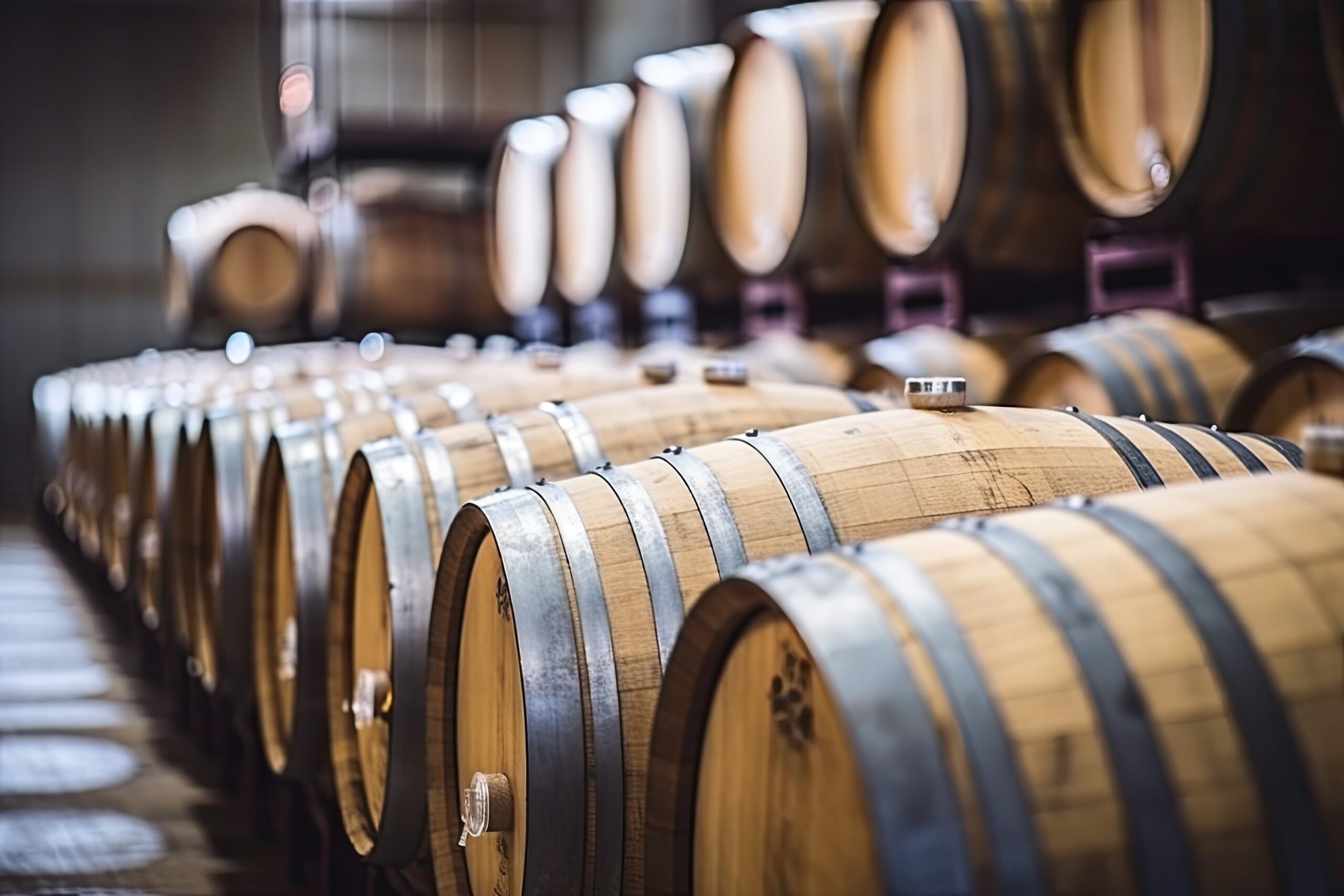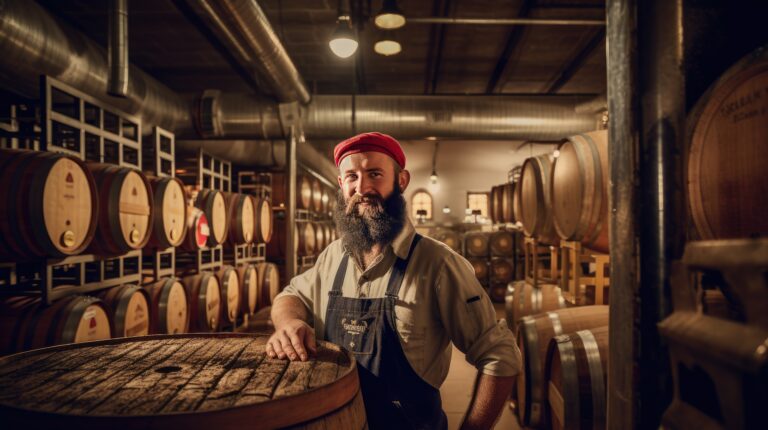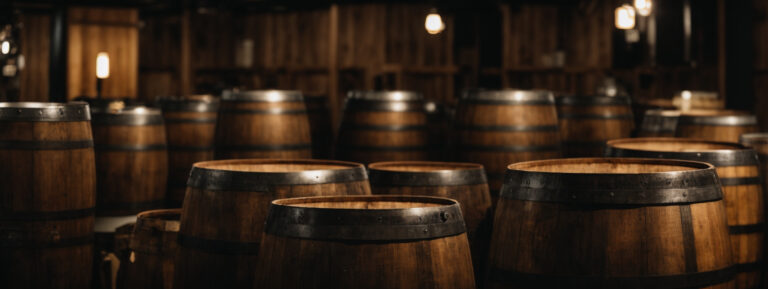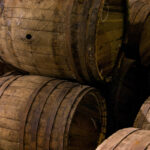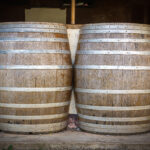Ever wonder how those different oak barrels work their magic on the flavor of your favorite whiskey? You’re definitely not alone! As a true whiskey enthusiast, you’ve likely pondered the subtle differences between a bold bourbon and a spicy rye, or perhaps the elegance of a single malt versus the harmony of a blend. But have you ever stopped to think about the incredible role the wood itself plays in elevating and completely transforming the whiskey as it ages? Think of it – American oak, French oak, and Spanish oak barrels are the unsung heroes in whiskey production, each bestowing a unique tapestry of aromas and tantalizing tastes onto the final spirit. In this exciting taste test, we’re going to personally guide you through the distinct flavor profiles of three exceptional whiskeys, each lovingly aged in a different type of oak barrel. This journey will empower you to pinpoint your personal preference and evolve into an even more discerning whiskey connoisseur. So, grab your trusty glencairns – adventure awaits!
Unlocking Flavor: The Magic of Oak Barrels for Aging Whiskey
When it comes to the crucial process of aging whiskey, oak barrels are absolutely fundamental. But hold on – not just any oak will do! The specific type of oak, its origin, and the meticulous way it’s treated all have a profound impact on the final flavor of the whiskey. Let’s uncork the secrets of how barrels sourced from America, France, and Spain can each uniquely influence your cherished dram.
American white oak stands out as a hugely popular choice, especially for crafting rich bourbon. It generously imparts comforting notes of creamy vanilla, sweet coconut, and warm spice. This remarkable wood is patiently air-dried for around two years, allowing those crucial tannins to gracefully develop. The fascinating process of charring the inside of the barrels before they even meet the whiskey acts like a flavor accelerator, conjuring delightful hints of luscious caramel and sweet toffee.
French oak, often the preferred choice for aging elegant cognac, boasts a denser grain and a higher concentration of tannins. It lends cognacs captivating aromas of sun-dried fruits, think juicy apricots and plump prunes. This prized wood often enjoys a longer seasoning period of about three years and is typically gently toasted rather than heavily charred. The result? A subtly complex and beautifully layered flavor profile.
Spanish oak, traditionally used in the aging of rich sherries, contributes a distinctive oxidized and wonderfully nutty character. This particular wood tends to be older, naturally drier, and more porous. Whiskeys that have matured in these ex-sherry casks eagerly absorb a symphony of flavors, including decadent dried fruits, savory nuts, and rich chocolate. Interestingly, these casks are usually not charred, which helps impart a remarkably smooth and rounded quality to the whiskey.
While the bold character of bourbon truly benefits from a robust heavy char, other whiskeys often showcase more delicate nuances. French oak bestows upon cognac a mellow and beautifully fruity essence. Spanish oak crafts a rich and nutty sherry-infused whisky that’s truly special. Ultimately, it’s the unique type of oak – and the artful way it’s prepared – that dictates the distinctive taste we savor in our whiskey. So, what’s your flavor story? The answer, quite literally, lies within the cask!
American Oak: The Timeless Heart of the Whiskey Barrel
American oak barrels have been the steadfast companions in the aging journey of classic bourbon whiskey for generations, shaping the iconic flavor profile that whiskey drinkers around the globe have come to know and deeply appreciate.
The Wood Itself
The white oak used in these barrels often boasts an impressive age of 100 to 200 years. As this magnificent wood matures, its natural pores gradually open, encouraging greater oxidation and allowing it to generously impart more of its inherent flavor into the developing whiskey. Over time, the natural sugars present in the wood undergo a beautiful caramelization, bestowing upon bourbon its signature warm amber hue and those delightful notes of sweet vanilla, tropical coconut, and comforting spice.
The deliberate charred interior of these barrels, achieved by briefly and carefully burning the inside of the cask, creates a crucial layer of charcoal. This acts as a natural filter, gently mellowing the whiskey. Furthermore, fascinating compounds within the wood called lignins gracefully break down into wonderfully vanilla-like aromatics that permeate the very essence of the bourbon.
Regional Nuances
Interestingly, American white oak barrels crafted from wood sourced in different regions of the country can subtly influence the final flavor of the bourbon. For instance, wood harvested from the central states might contribute delicate hints of bright cherries, while oak from the eastern regions could yield bourbon with intriguing notes of rich maple or savory nuts. It’s even believed that barrels made from wood grown in the southern states tend to impart more exotic, tropical fruit flavors.
The Art of Maturation
As the bourbon patiently matures within the barrel, it progressively absorbs more and more of the wood’s unique characteristics. A typical aging period ranges from two to four years, but allowing the bourbon to age for longer often results in a deeper, smokier character with intriguing whispers of tobacco, supple leather, and warm spice.
While American white oak barrels are deeply intertwined with the rich tradition of bourbon, the use of barrels crafted from French and Spanish oak also occurs, introducing subtle yet discernible differences in flavor that seasoned whiskey connoisseurs can expertly detect. Engaging in a side-by-side comparison of whiskies aged in these different oak barrels offers a fantastic opportunity to truly appreciate the profound impact that both the wood type and its origin have on this quintessential American spirit.
French Oak: Where Elegance and Refinement Meet Whiskey
The esteemed French oak barrel is celebrated for bestowing an air of elegance and a refined quality upon the whiskies that gracefully age within its embrace. Primarily sourced from the renowned Limousin and Tronçais forests of France, French oak is highly valued for its fine grain and naturally high levels of tannins.
The Delicate Flavor Profile
Whiskies that have matured in French oak barrels often exhibit distinctive and alluring flavor notes of sweet vanilla, warm spice, and luscious dried fruit. The oak itself contributes captivating aromas of fragrant cinnamon, warm clove, and aromatic nutmeg, often accompanied by a subtle whisper of smokiness. You might even detect delightful flavors reminiscent of juicy cherries, sweet apricots, or plump prunes. The influence of French oak barrels often results in whiskies with a beautifully silky mouthfeel and a long, complex finish that lingers pleasantly.
The Craft of Cooperage
French coopers are highly skilled artisans who meticulously air-season and toast the oak staves to incredibly precise specifications. Their expertly crafted barrels are traditionally assembled using metal hoops rather than wire, a technique that allows the individual staves to subtly move in response to environmental changes. This natural “breathing” effect fosters a dynamic and intricate relationship between the developing whiskey and the wood, facilitating a nuanced exchange of flavors.
French oak barrels typically command a higher production cost due to the superior quality of the wood and the intricate handcrafted techniques employed. However, many discerning distillers firmly believe that the enhanced complexity and undeniable finesse they impart to the whiskey more than justify this investment. If qualities like elegance, refinement, and a touch of old-world charm resonate with your appreciation of whiskey, you’ll likely find a whiskey aged in French oak barrels utterly enchanting.
Whiskies aged in French oak barrels are often described as:
- Sophisticated
- Polished
- Stylish
- Graceful
Some notable examples of whiskies that have benefited from aging in French oak barrels include:
- Bushmills Malt 21 Year Old Madeira Cask
- The Balvenie DoubleWood 17 Year Old
- Aberlour A’Bunadh Single Malt Scotch Whisky
- Elijah Craig Small Batch
The careful selection of barrels and meticulous aging techniques culminate in the creation of fine, premium whiskies brimming with depth and intriguing nuance. Whiskies aged in French oak barrels beautifully exemplify true craftsmanship, artistic vision, and a deep appreciation for the subtle nuances that distinguish the truly exquisite from the merely ordinary. If you’re eager to refine your palate and experience whiskey at its absolute best, embarking on a tasting journey with one aged in French oak is an excellent starting point.
Spanish Oak: Embracing Boldness and Robust Character in Whiskey
Spanish oak barrels are crafted from the wood of the Quercus petraea tree, a species native to the Iberian Peninsula, specifically Spain and Portugal. This distinctive oak possesses a bold and robust flavor profile that lends whiskey rich and intense aromas, along with a notably fuller body.
The Intense Flavor Profile
Spanish oak is known for its high concentration of tannins, which generously impart flavors of warm spice, like cloves and nutmeg, alongside the sweetness of dried fruit, such as juicy raisins and plump prunes. These tannins also contribute a drier and more pronounced, sometimes even grippy, mouthfeel to the whiskey. Interestingly, some whiskey enthusiasts detect intriguing notes reminiscent of rich chocolate or dark coffee.
The Aging Difference
Compared to American oak, Spanish oak barrels typically yield whiskey that requires a longer aging period to allow those robust and spicy flavors to mellow and round out beautifully. However, the very tannins present in Spanish oak also play a vital role in helping the whiskey age gracefully, facilitating the development of more complex and layered flavors over time.
The Influence of Sherry
Spanish oak barrels are frequently employed in the aging of flavorful sherries and rich Madeira wines before they find their way into the world of whiskey. This prior use can wonderfully infuse the wood with nutty and slightly tangy flavors that are then imparted to the aging whiskey. These pre-used wine casks are typically charred to varying degrees to enhance the extraction of flavor compounds from the wood.
Notable Examples
Some well-regarded whiskies that have been aged in Spanish oak casks include Glenlivet Nàdurra Oloroso, Macallan Edition No. 2, and Westland Sherry Wood. The strategic use of Spanish oak helps to create distinctive and full-flavored whiskies that truly stand out from those aged in more commonly used American or French oak barrels.
If you’re on the hunt for a bold and robust whiskey brimming with rich dried fruit, warm spice, and decadent chocolatey flavors, then seeking out one that has been lovingly aged in Spanish oak barrels is highly recommended. The unique tannins and complex wood flavors derived from the Spanish Quercus petraea oak tree can undoubtedly create an unforgettable drinking experience for discerning whiskey aficionados.
How Oak Origin Profoundly Affects Whiskey Flavor
The specific type of oak chosen to craft a whiskey barrel exerts a significant influence on both the flavor and the aromatic profile of the spirit as it patiently ages. American white oak, French oak, and Spanish oak each contribute their own set of unique characteristics to the final whiskey.
American white oak barrels tend to produce bourbons and other whiskies with comforting notes of sweet vanilla, rich caramel, and tropical coconut. This particular oak is quite porous, allowing for a significant amount of oxygen to interact with the spirit over time. This interaction, combined with the barrel charring process, often results in a distinctive smoky and slightly charred flavor.
French oak barrels, frequently favored for aging elegant Cognac, often yield fruitier flavor profiles, reminiscent of sun-dried cherries, sweet apricots, and rich figs. This oak boasts a denser grain structure, which means less oxygen permeates the wood. This characteristic limits the influence of the barrel char and allows the naturally occurring fruity compounds within the wood to truly shine through.
Spanish oak barrels tend to impart whiskies with bold and spicy flavors, such as warm clove, aromatic nutmeg, and fragrant cinnamon. This oak contains a higher concentration of tannins, which often results in a drier and fuller-bodied spirit. While Spanish oak is less commonly used for Scotch whisky, it finds greater application in the aging of fine brandies.
Ultimately, the specific type of oak, the level of barrel char, and the unique aging conditions all play crucial roles in shaping the final aroma and taste of a whiskey. The fascinating process of experimenting with different barrel types, woods, and aging environments empowers distillers to artfully craft a unique and tailored flavor profile for their cherished spirits. Engaging in a side-by-side comparison of whiskies aged in American, French, and Spanish oak offers a wonderful opportunity to personally experience just how profoundly the origin of the oak shapes the final product in your glass.
American Whiskeys Elevated by Different Oak Barrels
American oak barrels have been the trusted vessels for aging whiskey for centuries and are widely regarded as the gold standard, particularly for crafting exceptional bourbon. These barrels tend to impart sweeter notes, such as creamy vanilla and tropical coconut.
The Allure of Charred Virgin Oak
Virgin oak barrels, meaning they are used only once for the purpose of aging whiskey, are typically charred on the inside. This process imbues the whiskey with delightful flavors of rich caramel, sweet maple syrup, and savory toasted nuts. Popular American whiskeys that proudly mature in charred virgin oak include the iconic Maker’s Mark and the robust Knob Creek.
The Nuances of Reused Barrels
Some discerning distillers prefer to age their whiskey in barrels that have previously been used to age bourbon. With each subsequent use, the barrel imparts less of its inherent oak and char flavor but often contributes a greater sense of overall complexity to the spirit. Whiskies aged in these reused barrels often exhibit smoky and spicy characteristics, as seen in the well-regarded Four Roses and Bulleit Bourbon.
The French Connection
While French oak barrels are more commonly associated with the aging of fine wine, some innovative American distillers are also embracing their unique qualities for whiskey. French oak tends to lend whiskey warm and aromatic flavors of fragrant cinnamon, spicy clove, and aromatic nutmeg. Notable American whiskeys that have benefited from French oak aging include Stranahan’s Colorado Whiskey and Garrison Brothers Bourbon.
The Spanish Influence
Spanish oak barrels typically produce whiskies with rich and robust flavors of luscious dried fruit, such as juicy raisins and plump prunes, often accompanied by decadent notes of rich chocolate and dark coffee. While fewer American distillers currently utilize Spanish oak, compelling examples include Catoctin Creek Roundstone Rye and the complex St. George Single Malt Whiskey.
The specific type of oak and the prior use of a barrel undeniably have a significant impact on the final flavor profile of aged whiskey. By comparing whiskies aged in different oak barrels sourced from America, France, and Spain, you can embark on a fascinating journey through a diverse range of flavors within a single spirit category. Tasting them side by side is an invaluable way to train your palate to detect even the most subtle differences.
French Whiskeys Finding Character in Different Oak Barrels
French oak barrels, particularly those hailing from the esteemed Limousin and Tronçais forests, have been integral to the aging process of both whiskey and wine for centuries. These exceptional barrels often impart subtle yet distinctive notes of warm spice and sweet vanilla to the whiskey.
The Allure of Limousin Oak
Limousin oak barrels, crafted from trees in the central region of France, tend to produce whiskies with prominent flavors of creamy vanilla, savory almond, and rich cocoa. This particular wood is notably high in vanillin, the very compound that gives vanilla its characteristic aroma and delightful taste. Whiskies aged in Limousin oak often exhibit a subtle nutty, almost marzipan-like flavor.
The Elegance of Tronçais Oak
Tronçais oak originates from the renowned Tronçais forest in the Allier region of France. This tight-grained wood is rich in lactones, compounds that contribute delightful coconut and tropical fruit flavors. Whiskies that have matured in Tronçais oak barrels frequently showcase aromas and tastes of toasted coconut, sweet apricot, and juicy peach. The tight grain of this wood also helps to limit excessive oxidation during the aging process, allowing these delicate fruit flavors to emerge beautifully.
The Spanish Influence
Spanish oak, especially that sourced from the regions of Galicia and Catalonia, is also employed in the aging of whiskey. Spanish oak typically imparts aromas and flavors of warm clove, fragrant cinnamon, rich coffee, and decadent chocolate in the final spirit. This particular wood is known for its high concentration of phenolic compounds like eugenol, which contribute those distinctive spicy and sometimes smoky notes. Whiskies aged in Spanish oak tend to be quite bold and robust in character.
Ultimately, the specific flavors imparted by each oak type boils down to its unique chemical composition. The varying levels of compounds like vanillin, lactones, and phenols present in the wood significantly influence the aroma, taste, and even the mouthfeel of the finished whiskey. Comparing whiskies aged in different oak barrels from around the world offers a delicious and educational way to explore the intricate nuances of oak and discover your own personal favorites.
Spanish Whiskeys Finding Their Soul in Different Oak Barrels
Spanish whiskeys mature in a diverse range of oak barrels, each contributing a unique facet to the final flavor profile. Three of the most commonly utilized types include:
The Familiar Embrace of American Oak
When aged in barrels that previously held bourbon, American oak imparts comforting flavors of sweet vanilla, rich caramel, and warm spice. This wood has a relatively dense structure, resulting in a whiskey with more subtle oak influences. Popular Spanish whiskeys that benefit from American oak aging include Cardhu and Macallan.
The Fruity Elegance of French Oak
French oak barrels, often having previously nurtured fine wine or elegant Cognac, tend to produce a fruitier whiskey with delicate hints of bright cherry and luscious dried fruit. This wood is more porous than American oak, allowing for a greater degree of interaction between the spirit and the barrel. Whiskies aged in French oak often exhibit a lighter and sweeter character. Examples include Glenlivet and Glenfiddich.
The Untapped Potential of Spanish Oak
Spanish oak, native to the Iberian Peninsula, is still relatively rare in the world of whiskey aging. However, it holds the potential to create truly unique and complex spirits with intriguing herbal and nutty flavors. While only a handful of distilleries currently age their whiskey in Spanish oak, its use is gradually increasing. One notable example is the Peat Monster Ardbeg, which showcases aromas of warm spice, rich cocoa, and distinct oak.
In the end, the specific type of oak and the prior contents of the barrel wield a significant influence over a whiskey’s taste and aroma. By thoughtfully experimenting with different barrels, distilleries can artfully craft a wide array of distinctive flavor profiles to cater to every discerning palate. Comparing whiskies aged in American, French, and Spanish oak provides a fantastic firsthand experience of how oak variations shape the final spirit in your glass. So, which barrel-aged whiskey has captured your heart?
FAQs Comparing Whiskeys Aged in American, French, and Spanish Oak Barrels
When embarking on a taste test of whiskies aged in different oak barrels, several key factors come into play in determining the resulting flavor profiles. These include the specific type of oak, the geographical origin of the oak, and the precise way in which the barrels were toasted and charred – all of which leave their unique imprint on the whiskey during its aging journey.
The Bold Character of American Oak Barrels
Whiskies aged in barrels crafted from American white oak tend to exhibit a bold character, often showcasing prominent notes of sweet vanilla, rich caramel, and warm spice. This particular wood imparts a distinctive sweetness to the spirit. American oak barrels are typically heavily charred, which contributes a smoky and robust quality to the whiskey. Popular American whiskeys like Jack Daniel’s and Jim Beam are famously aged in new American white oak barrels.
The Subtle Complexity of French Oak Barrels
French oak barrels generally yield whiskies with more subtle and complex flavor profiles. This wood often contributes elegant aromas of candied fruit, a pleasant nuttiness, and hints of rich cocoa. French oak barrels are usually medium-toasted, a process that allows the inherent flavor of the oak to shine through without overpowering the delicate nuances of the whiskey. Well-regarded Scotch whiskies such as Glenlivet and Glenfiddich utilize barrels made from French oak.
The Rich Fruitiness of Spanish Oak Barrels
Spanish oak barrels tend to impart whiskies with rich and luscious dried fruit notes, particularly those of juicy raisins, plump prunes, and sweet apricots. This wood also contributes a wonderfully creamy mouthfeel to the whiskey. Compared to American and French oak barrels, Spanish oak barrels are often more lightly toasted. Some exceptional Irish whiskeys, like Bushmills, utilize Spanish oak casks for their aging process.
Ultimately, the preference for a particular type of oak is a matter of personal taste and exploration. Do you gravitate towards the bold and robust flavors imparted by American oak? Or perhaps the subtle and complex notes derived from French oak? Maybe the rich and fruity qualities of Spanish oak capture your palate? Comparing whiskies aged in these different oak barrels provides a fantastic opportunity to explore the wide spectrum of flavors that wood and barrels alone can contribute. The only true way to discover your favorite is to embark on your own delicious taste test!
Final Thoughts: A World of Flavor Shaped by Wood
So there you have it – a glimpse into the fascinating world of how different oak barrels shape the very soul of whiskey. As you’ve hopefully discovered, the specific type of oak and the origin of the barrel can exert a profound influence on the final flavor, captivating aroma, and even the rich color of the finished product. American oak tends to bestow those comforting vanilla and sweet coconut notes with a generally lighter body. French oak often brings forth intriguing hints of warm spice and luscious fruit with a medium body. And Spanish oak typically yields a robust and full-bodied whiskey characterized by pronounced tannins and delightful nutty, molasses-like flavors. Regardless of your personal barrel preference, you truly can’t go wrong with any of these exceptional premium whiskeys. But now, armed with this newfound understanding of how different wood varieties influence the intricate aging process, you’ll be even better equipped to discover a whiskey that perfectly resonates with your individual palate. Happy tasting, and may your glencairn always be filled with something extraordinary!
